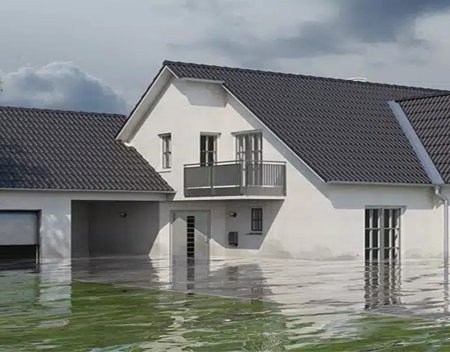Blog Categories
- Appliances Four
- Athletic Seating
- Auto Helpers
- Automated Stock Rooms
- Chocolate Four
- CuraFlo
- Damaged Goods Dating
- Flood Insurance Four
- Game Addict
- Hi Tech Pest Control
- HVAC Four
- Medical Labels Four
- Mental Health Four
- National CWS
- Promotional Ideas
- Seguros Lara Insurance
- Stem Cell Worx
- The Hidden Truth
- The Last Refuge
- The Mozilla Blog
- Video Editing Four
- Web Design Dev
- Website Development Four
- Windows Blog
preparing flood insurance

Preparing for flood insurance involves several important steps to ensure adequate coverage and protection against potential flood damage.
Here's a general guide on how to prepare for flood insurance: Evaluate your flood risk: Determine if you live in a flood-prone area.
You can check flood maps provided by FEMA (Federal Emergency Management Agency) to assess your property's flood risk.
Understand flood insurance policies: Familiarize yourself with the types of flood insurance policies available.
In the United States, the National Flood Insurance Program (NFIP) offers flood insurance to homeowners, renters, and businesses.
Private insurance companies may also offer flood insurance, so it's essential to understand the coverage options and limitations of each policy.
Assess your coverage needs: Calculate the value of your property and belongings to determine the amount of coverage you need.
Consider factors such as the cost of rebuilding your home, replacing personal belongings, and additional living expenses if you're displaced due to flooding.
Purchase flood insurance: Once you've assessed your flood risk and coverage needs, purchase a flood insurance policy.
If you're in a high-risk flood zone and have a mortgage from a federally regulated or insured lender, you may be required to have flood insurance.
Review policy details: Carefully review the terms and conditions of your flood insurance policy, including coverage limits, deductibles, and exclusions.
Make sure you understand what is covered and what isn't.
Keep important documents safe: Store copies of your flood insurance policy, along with other important documents like property deeds, in a waterproof and fireproof container.
Consider storing digital copies in a secure location as well.
Maintain your policy: Keep your flood insurance policy up to date by renewing it annually and notifying your insurance provider of any changes to your property or coverage needs.
Prepare your property: Take steps to minimize flood damage to your property, such as installing flood barriers, elevating utilities, and securing valuables.
Implementing flood-resistant landscaping techniques can also help reduce flood risk.
Know what to do in case of a flood: Familiarize yourself with emergency procedures and evacuation routes in your area.
Have a flood emergency kit prepared with essential supplies like water, food, medications, and first aid supplies.
Document your belongings: Create an inventory of your belongings, including photos or videos, to expedite the claims process in case of flood damage.
Keep this inventory in a safe place along with your other important documents.
By following these steps, you can better prepare for flood insurance and mitigate the financial risks associated with flood damage to your property.
Re Posted From: preparing flood insurance

Preparing for flood insurance involves several important steps to ensure adequate coverage and protection against potential flood damage.
Here's a general guide on how to prepare for flood insurance: Evaluate your flood risk: Determine if you live in a flood-prone area.
You can check flood maps provided by FEMA (Federal Emergency Management Agency) to assess your property's flood risk.
Understand flood insurance policies: Familiarize yourself with the types of flood insurance policies available.
In the United States, the National Flood Insurance Program (NFIP) offers flood insurance to homeowners, renters, and businesses.
Private insurance companies may also offer flood insurance, so it's essential to understand the coverage options and limitations of each policy.
Assess your coverage needs: Calculate the value of your property and belongings to determine the amount of coverage you need.
Consider factors such as the cost of rebuilding your home, replacing personal belongings, and additional living expenses if you're displaced due to flooding.
Purchase flood insurance: Once you've assessed your flood risk and coverage needs, purchase a flood insurance policy.
If you're in a high-risk flood zone and have a mortgage from a federally regulated or insured lender, you may be required to have flood insurance.
Review policy details: Carefully review the terms and conditions of your flood insurance policy, including coverage limits, deductibles, and exclusions.
Make sure you understand what is covered and what isn't.
Keep important documents safe: Store copies of your flood insurance policy, along with other important documents like property deeds, in a waterproof and fireproof container.
Consider storing digital copies in a secure location as well.
Maintain your policy: Keep your flood insurance policy up to date by renewing it annually and notifying your insurance provider of any changes to your property or coverage needs.
Prepare your property: Take steps to minimize flood damage to your property, such as installing flood barriers, elevating utilities, and securing valuables.
Implementing flood-resistant landscaping techniques can also help reduce flood risk.
Know what to do in case of a flood: Familiarize yourself with emergency procedures and evacuation routes in your area.
Have a flood emergency kit prepared with essential supplies like water, food, medications, and first aid supplies.
Document your belongings: Create an inventory of your belongings, including photos or videos, to expedite the claims process in case of flood damage.
Keep this inventory in a safe place along with your other important documents.
By following these steps, you can better prepare for flood insurance and mitigate the financial risks associated with flood damage to your property.
Re Posted From: preparing flood insurance

